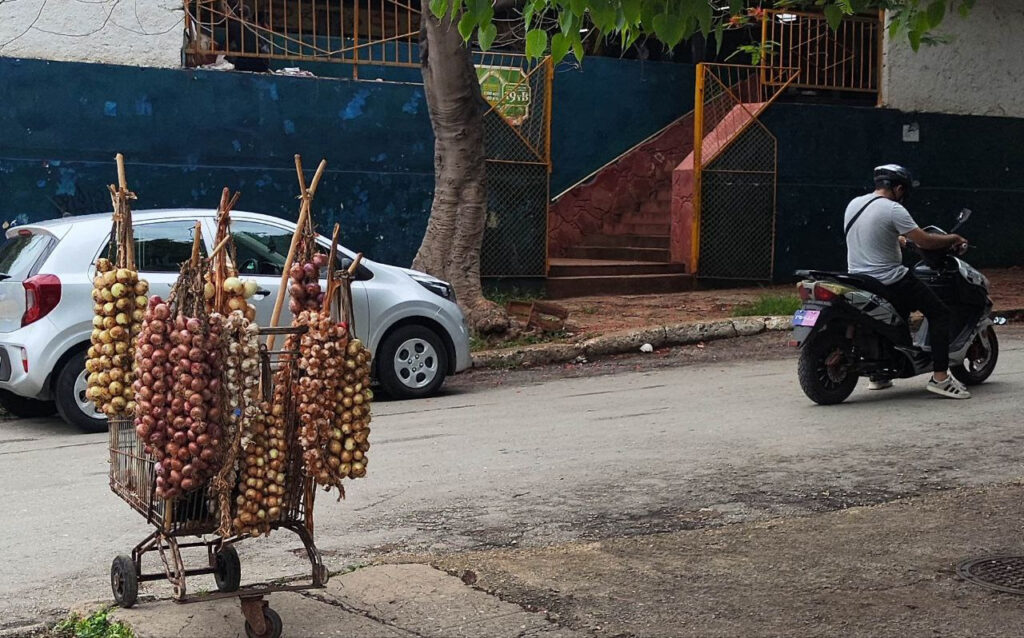The onion grown in Cuban fields has become smaller and dirtier over the decades.

14ymedio, Natalia Lopez Moya, Havana, 5 August 2024 — Mojo criollo may lack the precious acidic flavor of lemon or sour orange, or even lack oil – which is replaced by water in times of crisis – but it must contain onion and garlic. Without those two ingredients, the mixture does not even deserve to bear the name of the traditional marinade so often used in Cuban kitchens.
Dignified, the onion is practically a must in every dish in the recipe book of this island. There is no stew, casserole, roast meat or fricassee that does not contain this vegetable that brings tears to the eyes of even the most ruthless. Lately, however, the tears have been focused on the pockets due to the prices that the product reaches and the long periods during which it disappears from the market shelves.
Despite its essential status, the onion grown in Cuban fields has become smaller and dirtier over the decades. The shrinkage in size has, however, been inversely proportional to the price paid for a string or a bunch, whether of the white or purple variety.
The product has been shifted to the furtive or illegal trade in an attempt to avoid price controls
A year ago, a pound of onions cost about 350 pesos at the market on 19 and B in El Vedado, Havana. One of the most emblematic and expensive stores selling agricultural products in the Cuban capital has been able to offer onions practically every week, but other businesses have not had the same luck. The product has been shifted to the furtive or illegal trade in an attempt to avoid the price controls imposed by the authorities
This August, in the same market, a pound of onions costs 400 pesos, but the size and quality have dropped considerably. In July, it had risen to 450 and “they were pitiful little onions, they seemed to have been picked from the field too early and had very little flavor. Where before two were used, four had to be put


